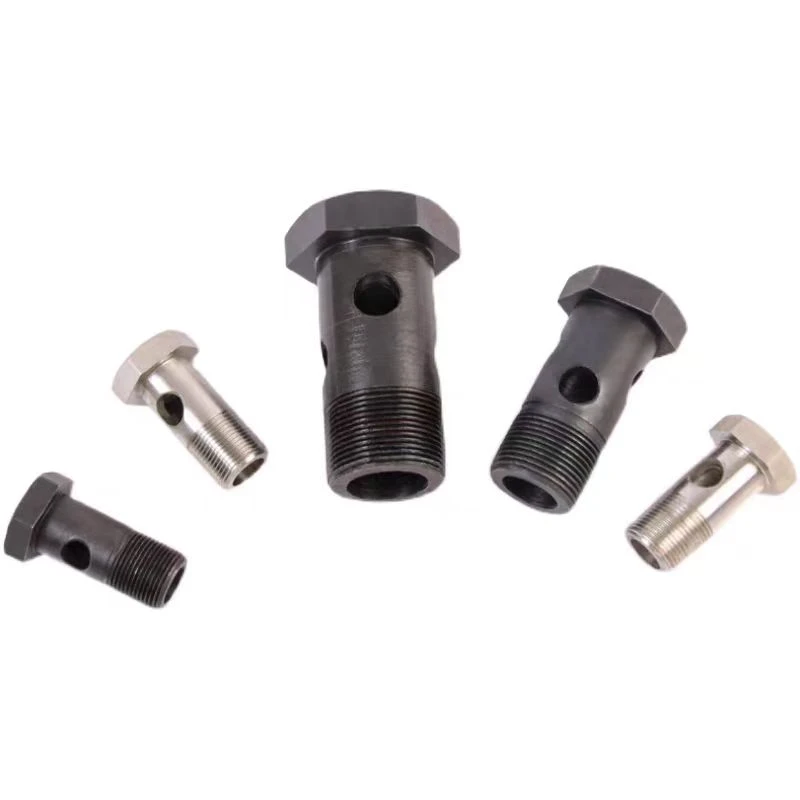

hexagon nut with flange
Dec . 18, 2024 20:09 Back to list
hexagon nut with flange
Understanding Hexagon Nuts with Flange A Comprehensive Overview
Hexagon nuts with a flange are essential fasteners in various industries, providing both stability and reliability in assemblies. This type of nut is characterized by its hexagonal shape, which allows for easy installation and removal using standard wrenches. The inclusion of a flange offers unique benefits that distinguish it from traditional nuts, making it a popular choice in numerous applications.
Design Features
The fundamental design of a hexagon nut includes six flat sides, enabling the use of different tools for tightening and loosening. The flange, which is a protruding edge at the base of the nut, serves multiple purposes. Firstly, it helps to distribute the load over a larger surface area, reducing the risk of damage to the component being fastened. This feature is particularly valuable in applications where the material is softer or prone to deformation.
Additionally, the flange acts as a form of washer, providing a larger bearing surface. This is crucial in preventing the nut from sinking into the mating surface, which can lead to loosening under vibration or dynamic loads. By minimizing the risk of loosening, hexagon nuts with flanges enhance the overall reliability of the assembly.
Material and Finish Options
Hexagon nuts with flanges are available in a variety of materials, including steel, stainless steel, and brass, each offering different mechanical properties and corrosion resistance. For instance, stainless steel variants are favored in marine and outdoor applications due to their resistance to rust and corrosion. The choice of material often depends on the specific requirements of the application, including factors such as strength, environmental conditions, and aesthetic considerations.
Moreover, these nuts can come in various finishes, such as zinc plating, which provides additional corrosion resistance, or black oxide for a more aesthetically pleasing appearance. The finish can also influence the friction characteristics between the nut and the bolt, impacting the overall torque and clamping force during installation.
hexagon nut with flange

Applications
Hexagon nuts with flanges are extensively used across various sectors, including construction, automotive, and manufacturing. In construction, they play a vital role in securing structural components where stability is paramount. The automotive industry frequently utilizes these nuts in assemblies subjected to significant vibrations, such as engine components and suspension systems.
Furthermore, these fasteners are prevalent in electronic equipment, where reliable connections are necessary for functionality. Their ability to maintain tight connections without loosening makes them ideal for electronic housings that experience thermal expansion and contraction.
Installation and Maintenance
Installing hexagon nuts with flanges generally follows the same procedure as standard hexagon nuts. However, it is advisable to use the appropriate torque settings recommended by the manufacturer to ensure optimal performance. Over-tightening can lead to damage both to the nut and the components being fastened, while under-tightening may result in loosening.
Maintenance of these fasteners primarily involves periodic inspection to ensure they remain tight and free from corrosion. In environments prone to moisture or chemicals, regular checks can prevent issues that might compromise the integrity of the assembly.
Conclusion
In summary, hexagon nuts with flanges offer a combination of strength, stability, and versatility that makes them an essential component in various applications. Their unique design features, including the load-distributing flange, enhance their reliability, particularly in environments with vibration and dynamic loads. With a range of materials and finishes available, these fasteners can be tailored to meet the specific demands of any project. Understanding the characteristics and applications of hexagon nuts with flanges is crucial for engineers and designers aiming to create safe and durable assemblies in their respective fields. As industries continue to evolve, the role of these fasteners will remain pivotal in ensuring structural integrity and performance.
Latest news
-
High-Strength Hot Dip Galvanized Bolts - Hebei Longze | Corrosion Resistance, Customization
NewsJul.30,2025
-
Hot Dip Galvanized Bolts-Hebei Longze|Corrosion Resistance&High Strength
NewsJul.30,2025
-
High-Strength Hot-Dip Galvanized Bolts-Hebei Longze|Corrosion Resistance&High Strength
NewsJul.30,2025
-
Hot Dip Galvanized Bolts-Hebei Longze|Corrosion Resistance&High Strength
NewsJul.30,2025
-
Hot Dip Galvanized Bolts - Hebei Longze | Corrosion Resistance, High Strength
NewsJul.30,2025
-
High-Strength Hot Dip Galvanized Bolts-Hebei Longze|Corrosion Resistance, Grade 8.8
NewsJul.30,2025

